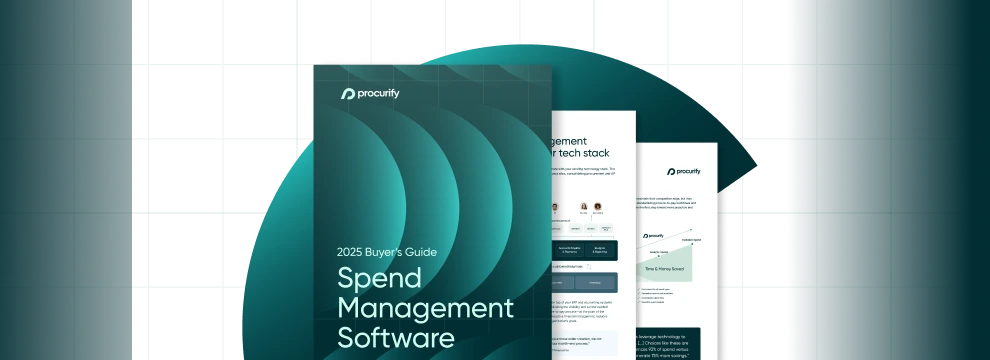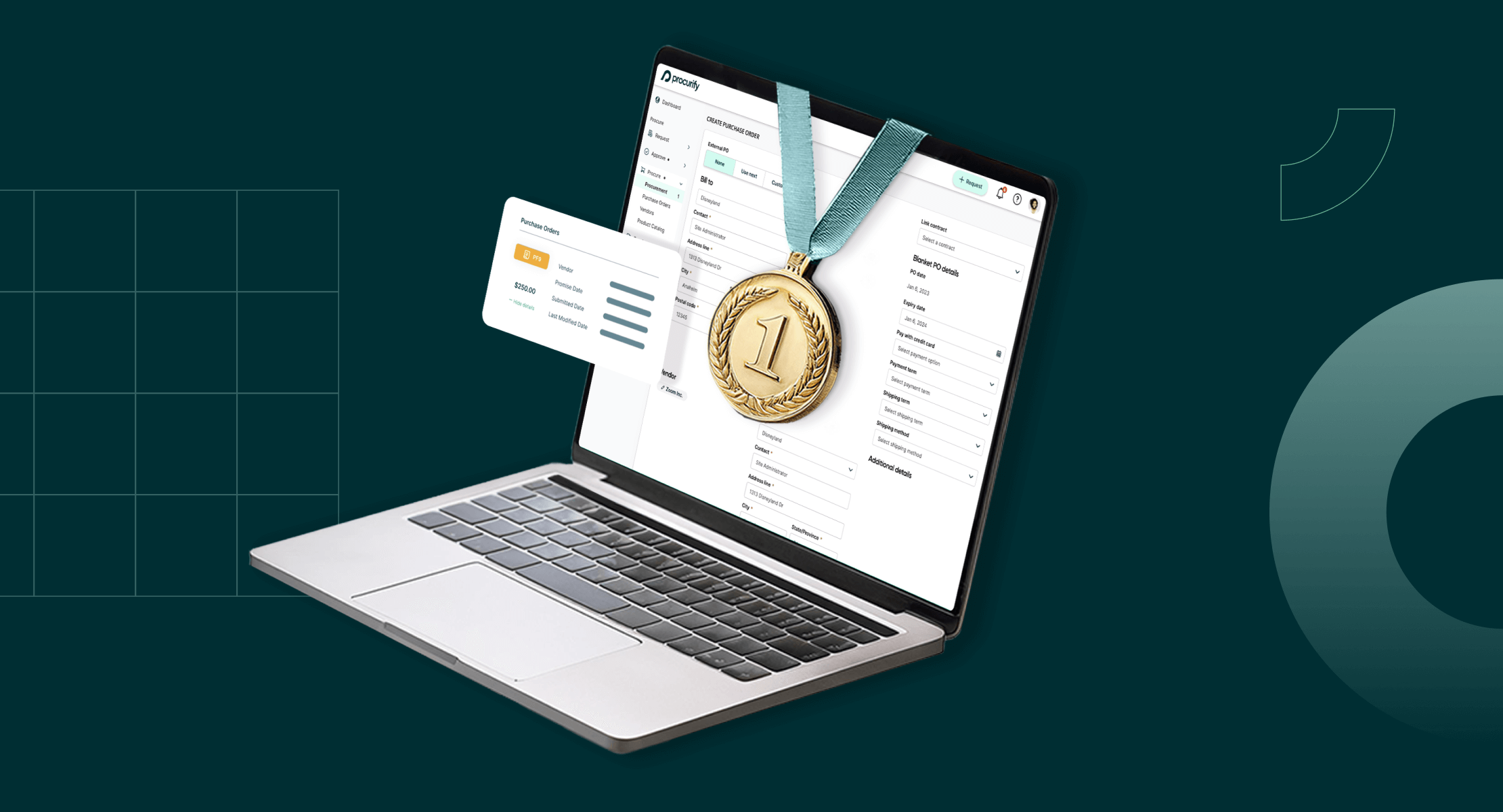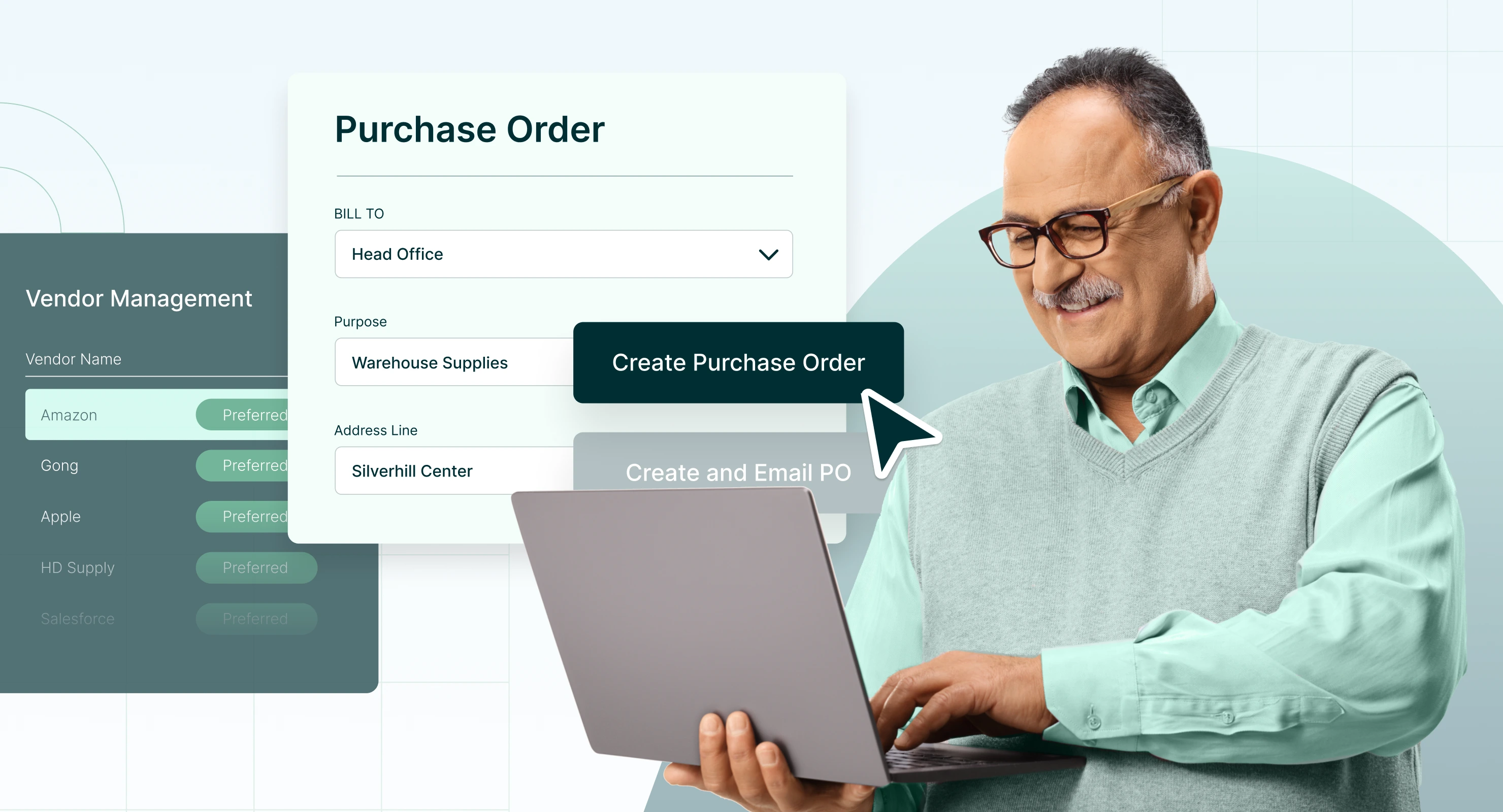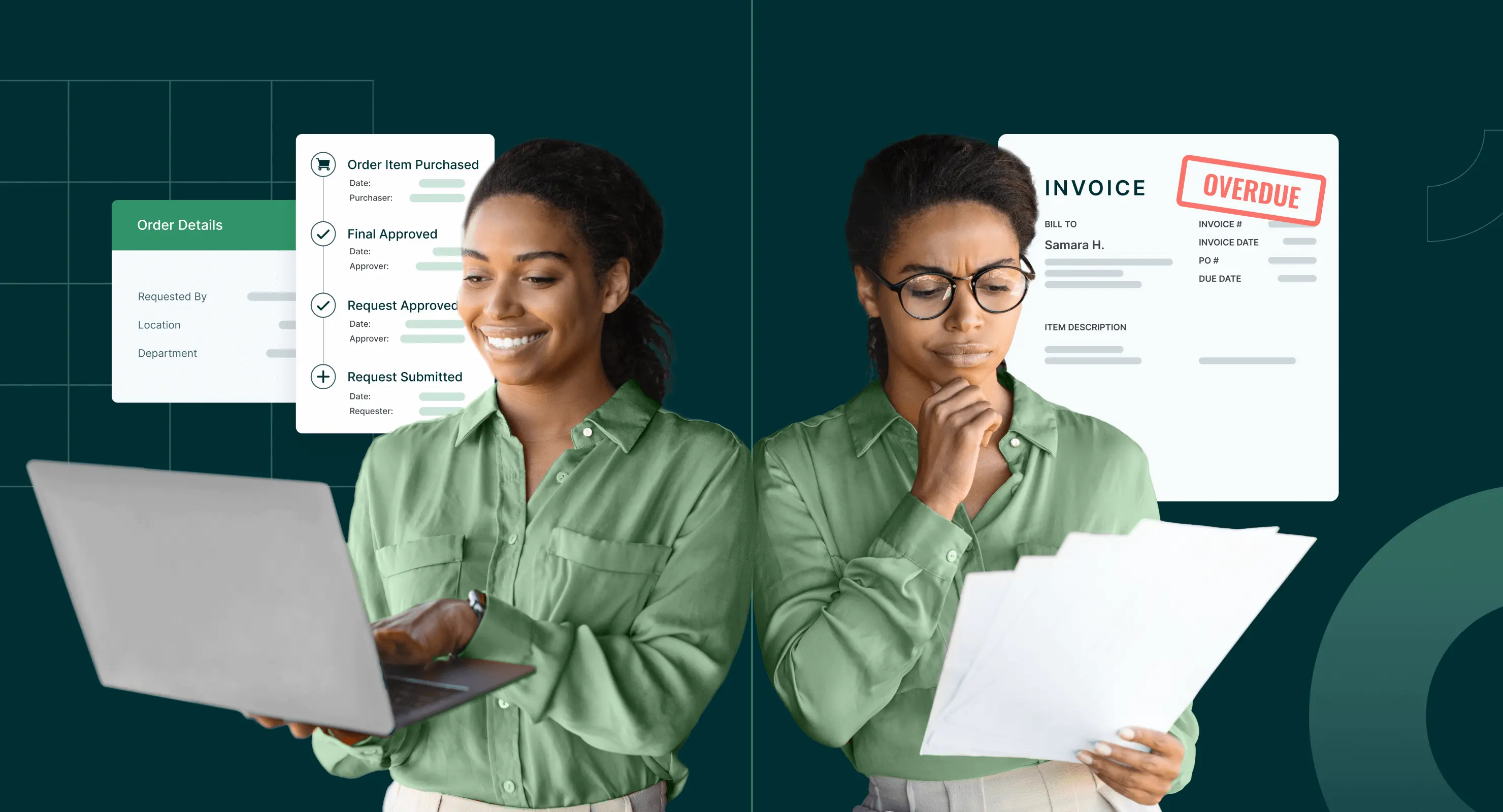
Procurement Software Benefits vs. Traditional Methods: Why it’s Time to Upgrade
Procurement is often referred to as the backbone of supply chain management.
It is a critical function in any organization that ensures that the necessary goods and services are acquired efficiently and cost-effectively. However, the methods by which we purchase and source our materials and goods are rapidly evolving.
Historically, businesses have relied on traditional – but dated – procurement methods such as paper-based systems, spreadsheets, and manual communication processes. While these methods have served their purpose, they come with significant limitations that can hinder growth and lead to inefficiencies (lack of visibility, manual errors, data silos).
However, in recent years, there has been a notable shift towards adopting modern procurement software, designed to automate and streamline procurement processes. This transition is not just a trend but a necessity for businesses that want to remain competitive in an increasingly complex and fast-paced market. Middle-sized organizations and enterprises need to be able to purchase and track their spend in real-time by leveraging emerging technologies like automation and AI.
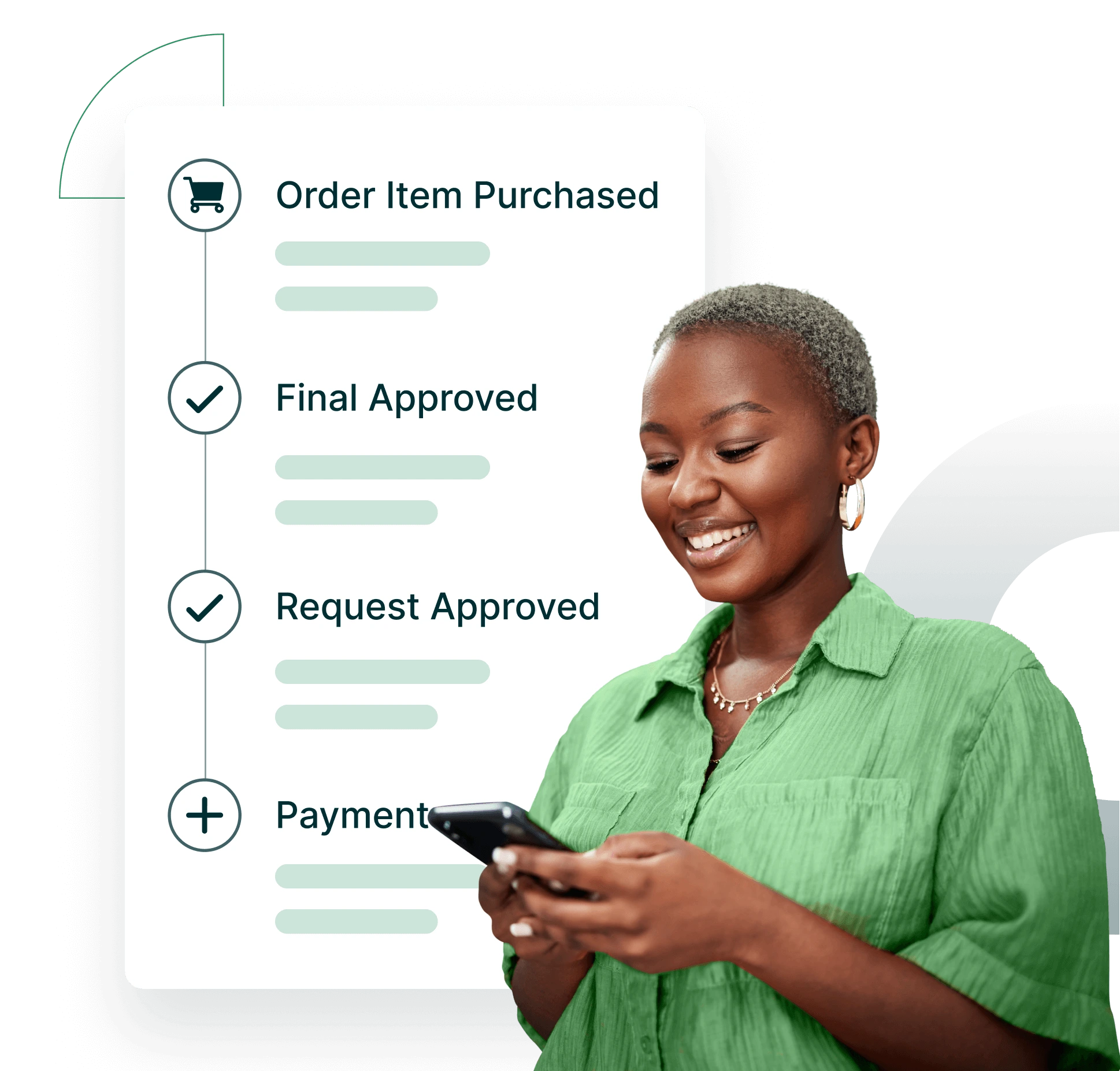
Ready to upgrade your procurement strategy?
Discover how Procurify’s procure-to-pay software empowers businesses to track and control every purchase from request to payment, ensuring more compliant and effective procurement.
1: Understanding traditional procurement methods
Traditional procurement methods have long been the cornerstone of acquiring goods and services in businesses of all sizes. These methods primarily rely on manual processes, where paper documents, spreadsheets, and email communication form the basis of procurement activities. While this approach may seem straightforward, it is fraught with challenges that can impact efficiency, accuracy, and overall business performance.
Manual processes
At the heart of traditional procurement lies a heavy reliance on manual tasks. Purchase orders are often created using word processing software or spreadsheets, which are then printed, signed, and physically routed for approval. Invoices are matched against these purchase orders and delivery notes, often requiring extensive manual data entry and reconciliation. This process is not only time-consuming but also prone to human error.
Lack of visibility and control
One of the most significant drawbacks of traditional procurement methods is the lack of real-time visibility into the procurement process. Because data is often siloed in different departments or stored in physical documents, it becomes challenging to track the status of orders, monitor spending, or ensure compliance with procurement policies. This lack of visibility can lead to overstocking, missed deadlines, and unanticipated budget overruns.
Errors and inconsistencies
Manual data entry, a hallmark of traditional procurement, is inherently error-prone. A simple typo or a misplaced decimal can result in significant discrepancies in orders, payments, or inventory levels. These errors often go unnoticed until they cause substantial operational disruptions, such as incorrect shipments, delayed payments, or disputes with suppliers.
Time-consuming approvals
In traditional procurement, the approval process can be slow and cumbersome. Purchase orders and invoices often need to pass through multiple layers of approval, with each step requiring physical signatures or email confirmations. This can cause delays in order processing and, ultimately, in the delivery of goods and services. Such delays can have a ripple effect, affecting production schedules, customer satisfaction, and overall business agility.
Higher risk of fraud
The manual nature of traditional procurement methods can also increase the risk of fraud. Without robust checks and balances, it is easier for unauthorized purchases to slip through the cracks, leading to potential financial losses. Additionally, the lack of centralized data makes it difficult to detect and prevent fraudulent activities on time.
Hypothetical examples
To illustrate these challenges, consider a company that relies on manual procurement methods. A single purchase order may take days or even weeks to be approved and processed, causing delays in the supply chain. In another scenario, a miscommunication between departments might result in duplicate orders, leading to excess inventory that ties up capital and storage space. These inefficiencies not only increase costs but also hamper the company’s ability to respond quickly to market changes.
In summary, while traditional procurement methods have been widely used and are familiar to many organizations, they come with significant drawbacks. The lack of automation, visibility, and control, coupled with the potential for errors and fraud, make these methods increasingly unsustainable in today’s fast-paced business environment.
2. An overview of procurement software
Procurement software is a digital solution designed to automate, streamline, and optimize the procurement process within an organization. Unlike traditional methods that rely on manual tasks, procurement software leverages technology to handle everything from purchase requisitions and order processing to supplier management and invoice reconciliation. This shift from manual to digital processes represents a significant leap forward in efficiency, accuracy, and control over procurement activities.
Definition and purpose
At its core, procurement software is a comprehensive tool that facilitates the entire procurement lifecycle. Its primary purpose is to simplify and centralize procurement activities, making it easier for businesses to manage their purchasing needs. By automating routine tasks, procurement software reduces the administrative burden on procurement teams, allowing them to focus on more strategic activities such as supplier negotiations and cost optimization.
Key features
Procurement software typically comes with a wide range of features designed to address various aspects of the procurement process. Some of the most common features include:
-
Automated purchase orders: Procurement software allows for the automatic generation and approval of purchase orders based on predefined criteria. This ensures that orders are processed quickly and accurately, with minimal manual intervention.
-
Supplier management: The software provides a centralized database for managing supplier information, including contracts, performance metrics, and communication history. This makes it easier to evaluate and collaborate with suppliers, leading to stronger relationships and better terms.
-
Spend analysis: Procurement software offers advanced analytics tools that provide insights into spending patterns, helping businesses identify cost-saving opportunities and ensure compliance with budgets.
-
Contract management: The software enables the efficient management of contracts throughout their lifecycle, from creation and negotiation to renewal and compliance monitoring. This reduces the risk of contract-related issues and ensures that all agreements are adhered to.
-
Invoice matching and payment processing: By automating the matching of invoices with purchase orders and delivery notes, procurement software minimizes the risk of errors and discrepancies. It also streamlines the payment process, ensuring that suppliers are paid on time and in accordance with agreed terms.
Types of procurement software
There are various types of procurement software available, each catering to different business needs and preferences:
-
Cloud-based procurement software: This type of software is hosted on the vendor’s servers and accessed via the Internet. It offers flexibility, scalability, and ease of access, making it a popular choice for businesses of all sizes.
-
On-premises procurement software: Installed on the company’s own servers, on-premises software provides greater control over data and security. However, it requires more significant upfront investment and ongoing maintenance.
-
Integrated procurement systems: Some procurement software is part of a broader enterprise resource planning (ERP) system, offering seamless integration with other business functions such as finance, inventory management, and human resources.
Benefits of procurement software
The benefits of adopting procurement software are manifold. By automating routine tasks and providing real-time data, procurement software improves efficiency, accuracy, and decision-making. It also enhances visibility into procurement activities, enabling better control over spending and compliance. Moreover, the software’s ability to centralize supplier management and contract administration reduces the risk of errors, fraud, and disputes.
In addition to these operational benefits, procurement software also supports strategic objectives such as cost optimization, supplier collaboration, and risk management. By providing the tools needed to analyze spending patterns, negotiate better terms, and ensure compliance with contracts, procurement software empowers businesses to achieve their procurement goals more effectively.
3: Benefits of upgrading to procurement software
Transitioning from traditional procurement methods to modern procurement software is not just a matter of convenience; it’s a strategic move that can significantly enhance the efficiency, accuracy, and overall performance of an organization’s procurement function. Below are the key benefits that make upgrading to procurement software a worthwhile investment.
Improved efficiency and speed
One of the most immediate and noticeable benefits of procurement software is the dramatic improvement in efficiency. Traditional procurement processes are often slow and labor-intensive, involving multiple steps that require manual intervention. Procurement software automates many of these tasks, from generating purchase orders to matching invoices, which drastically reduces the time required to complete each step.
For example, what once might have taken days or even weeks to process—such as the approval of a purchase order—can now be completed in a matter of hours or minutes. Automated workflows ensure that documents are routed to the appropriate individuals for approval, without the delays associated with manual handling. This increase in speed not only streamlines operations but also allows businesses to respond more quickly to changing market conditions and supply chain demands.
Enhanced visibility and control
Procurement software provides unparalleled visibility into the procurement process. With all procurement-related data centralized and accessible in real-time, businesses can track the status of orders, monitor spending, and ensure compliance with internal policies and external regulations. This level of transparency is virtually impossible to achieve with traditional methods, where data is often scattered across different departments and systems.
Moreover, procurement software allows for the customization of dashboards and reports, enabling procurement teams to focus on the metrics that matter most to their organization. Whether it’s tracking supplier performance, monitoring budget adherence, or identifying potential bottlenecks in the procurement process, the software provides the tools needed to maintain tight control over procurement activities.
Better supplier management
Supplier relationships are a critical aspect of procurement, and managing these relationships effectively can have a direct impact on an organization’s bottom line. Procurement software centralizes all supplier information, making it easier to manage contracts, track performance, and foster collaboration. By providing a single point-of-access for all supplier-related data, procurement software ensures that procurement teams have the information they need to make informed decisions and negotiate better terms.
Additionally, procurement software often includes features such as supplier portals, which allow suppliers to update their information, submit invoices, and communicate directly with the procurement team. This streamlines communication and reduces the risk of misunderstandings or delays, leading to stronger, more productive relationships.
Cost savings
Cost reduction is one of the most compelling reasons to upgrade to procurement software. By automating manual tasks and providing better visibility into spending, procurement software helps businesses identify inefficiencies and reduce unnecessary costs. For example, automated spend analysis can reveal opportunities for bulk purchasing or supplier consolidation, leading to significant cost savings.
Furthermore, procurement software reduces the likelihood of errors and discrepancies that can lead to costly mistakes. For instance, by automating the matching of invoices to purchase orders, the software minimizes the risk of overpayments or duplicate payments. The reduction in manual processing also means fewer resources are needed to manage procurement, resulting in additional cost savings.
Risk mitigation
Procurement software plays a crucial role in mitigating the risks associated with procurement, from compliance violations to supplier disruptions. By ensuring that all procurement activities are documented and auditable, the software helps businesses maintain compliance with internal policies and external regulations. This is particularly important in industries where regulatory compliance is critical, such as healthcare, finance, and government contracting.
In addition to compliance, procurement software enhances risk management by providing tools for monitoring supplier performance, tracking contract adherence, and identifying potential risks before they become issues. For example, if a supplier consistently fails to meet delivery deadlines, the software can alert the procurement team, allowing them to take corrective action before the situation escalates.
Strategic decision-making
Beyond operational improvements, procurement software also supports strategic decision-making. By providing access to comprehensive, real-time data, the software enables procurement leaders to make informed decisions that align with the organization’s overall goals. Whether it’s negotiating better terms with suppliers, optimizing inventory levels, or adjusting procurement strategies based on market trends, the insights provided by procurement software empower businesses to make decisions that drive success.
4: Manual procurement vs. procurement software: A comparative analysis
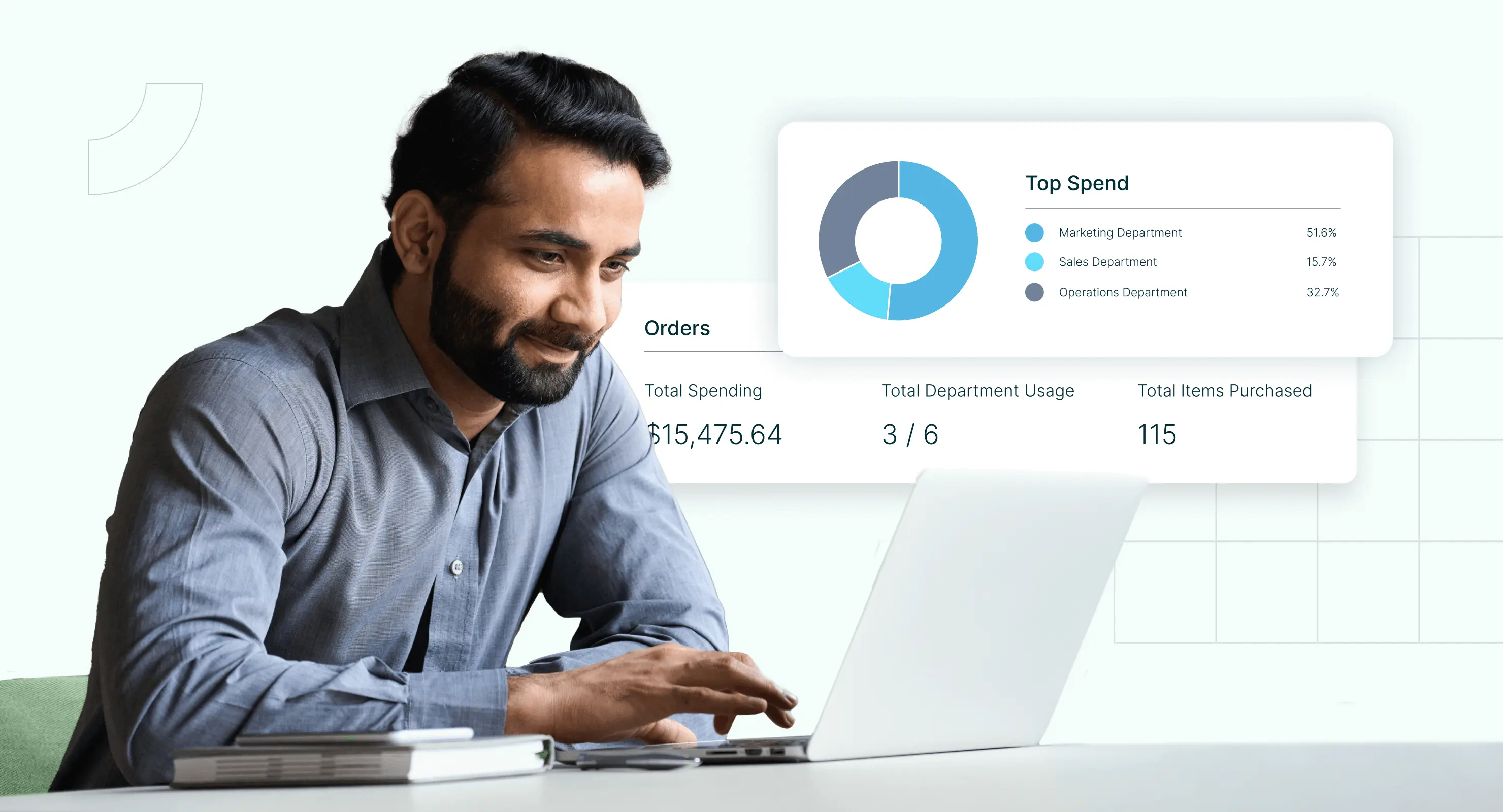
When evaluating the effectiveness of procurement practices, it’s essential to compare traditional manual methods with modern procurement software. This section provides a detailed comparison across key aspects, demonstrating why procurement software offers substantial advantages over manual processes.
Efficiency and speed
Manual procurement: Traditional procurement methods are often time-consuming, requiring significant manual effort at every stage of the process. From creating and routing purchase orders to matching invoices and reconciling payments, each step involves multiple layers of human intervention. This not only slows down the procurement cycle but also increases the likelihood of bottlenecks, especially in larger organizations with complex procurement needs.
Procurement software: In contrast, procurement software automates many of these tasks, significantly reducing the time required to complete them. For instance, automated workflows ensure that purchase orders are generated, approved, and processed quickly, often within hours. The software eliminates the need for manual data entry, allowing procurement teams to focus on more strategic activities. The overall result is a faster, more efficient procurement process that can adapt to changing business demands.
Accuracy and error reduction
Manual procurement: Manual processes are inherently prone to human error. Whether it’s a typo in a purchase order, an incorrect entry in a spreadsheet, or a miscommunication between departments, these errors can lead to costly mistakes. Errors in manual procurement can result in incorrect shipments, delayed payments, and even financial losses due to overpayments or duplicate orders.
Procurement software: Procurement software significantly reduces the risk of errors by automating data entry and ensuring that all information is accurately captured and processed. For example, the software can automatically match invoices to purchase orders and delivery receipts, ensuring that payments are only made for goods and services that have been received and approved. By eliminating manual errors, procurement software enhances the accuracy of procurement activities, leading to better financial control and fewer discrepancies.
Visibility and control
Manual procurement: One of the major drawbacks of traditional procurement methods is the lack of visibility into the entire procurement process. Data is often siloed in different departments or systems, making it difficult to get a comprehensive view of procurement activities. This lack of visibility can lead to issues such as budget overruns, missed deadlines, and difficulties in tracking supplier performance.
Procurement software: Procurement software provides a centralized platform where all procurement-related data is stored and accessible in real-time. This centralization allows procurement teams to monitor the status of orders, track spending, and ensure compliance with procurement policies. The software’s reporting and analytics features provide insights into spending patterns, supplier performance, and potential risks, enabling better decision-making and greater control over procurement activities.
Cost and resource management
Manual procurement: Traditional procurement methods can be resource-intensive, requiring significant time and effort from procurement teams. The manual nature of the processes also makes it difficult to identify cost-saving opportunities, as data is often scattered and not readily available for analysis. Additionally, the inefficiencies inherent in manual procurement—such as delayed approvals or errors—can lead to increased operational costs.
Procurement software: Procurement software optimizes resource management by automating routine tasks and providing tools for analyzing spending patterns. This automation reduces the need for manual intervention, freeing up procurement teams to focus on strategic initiatives that can drive cost savings. The software’s analytics capabilities also help identify areas where costs can be reduced, such as through bulk purchasing or supplier consolidation. Overall, procurement software helps organizations manage their resources more effectively, leading to significant cost savings.
Scalability
Manual procurement: As a business grows, the limitations of manual procurement methods become more apparent. The increased volume of transactions and the complexity of managing a larger supplier base can overwhelm manual processes, leading to inefficiencies and errors. Scaling manual procurement processes often requires adding more personnel, which can increase operational costs and further complicate the procurement process.
Procurement software: Procurement software is inherently scalable, making it easier for businesses to handle increased procurement demands as they grow. The software can manage a higher volume of transactions without requiring additional personnel, and its automation features ensure that processes remain efficient even as complexity increases. This scalability allows businesses to expand without the procurement function becoming a bottleneck, supporting growth and operational efficiency.
Risk management and compliance
Manual procurement: Managing risk and ensuring compliance with regulations is challenging when relying on manual procurement methods. The lack of centralized data and the potential for human error can lead to compliance violations, which can result in fines, legal issues, and reputational damage. Additionally, manual processes make it difficult to monitor supplier performance and identify potential risks before they become problems.
Procurement software: Procurement software enhances risk management and compliance by providing tools for tracking and documenting every aspect of the procurement process. The software ensures that all procurement activities comply with internal policies and external regulations, reducing the risk of non-compliance. Additionally, the software’s supplier management features allow businesses to monitor supplier performance in real-time, enabling proactive risk management. By providing greater visibility and control, procurement software helps businesses mitigate risks and maintain compliance more effectively.
5: Signs your organization needs to upgrade
Recognizing when it’s time to transition from traditional procurement methods to procurement software can be challenging, especially if the existing system has been in place for a long time. However, several signs indicate that your organization may be outgrowing its current processes and could benefit from the enhanced capabilities of procurement software. Here are some key indicators that it’s time to upgrade.
Frequent errors and discrepancies
If your organization is experiencing frequent errors in purchase orders, invoices, or inventory management, it’s a clear sign that manual processes are no longer sufficient. These errors not only lead to operational inefficiencies but can also result in financial losses, strained supplier relationships, and compliance issues. Procurement software can help eliminate these errors by automating data entry, ensuring that all transactions are accurate and consistent.
Slow approval processes
A lengthy and cumbersome approval process is another sign that your current procurement methods are holding your organization back. Manual approval processes often require multiple levels of review, each of which can introduce delays. If it routinely takes days or even weeks to approve purchase orders, your organization is likely suffering from reduced agility and missed opportunities. Procurement software streamlines the approval process by automating workflows, allowing for faster, more efficient decision-making.
Lack of real-time visibility
In today’s fast-paced business environment, having real-time visibility into your procurement activities is crucial. If your procurement data is scattered across different systems or departments, making it difficult to get a clear picture of spending, supplier performance, or order status, it’s time to consider an upgrade. Procurement software centralizes all procurement-related data, providing real-time insights that enable better decision-making and more effective management of resources.
Difficulty managing supplier relationships
Effective supplier management is essential for maintaining a reliable supply chain and negotiating favorable terms. If your organization struggles to keep track of supplier information, contracts, or performance metrics, you may be at a disadvantage when it comes to negotiating prices, managing risks, or resolving disputes. Procurement software provides a centralized platform for managing all supplier-related data, making it easier to build and maintain strong supplier relationships.
Inability to scale
As your organization grows, so do the demands on your procurement processes. If you’re finding it increasingly difficult to manage a higher volume of transactions or a more extensive supplier base with your current methods, it’s a clear sign that your system is not scalable. Procurement software is designed to handle the complexities of a growing business, allowing you to scale your procurement operations without compromising efficiency or accuracy.
Compliance challenges
Ensuring compliance with internal policies and external regulations is a critical aspect of procurement. If your organization struggles to maintain accurate records, monitor compliance, or produce the necessary documentation during audits, you may be at risk of regulatory violations. Procurement software helps mitigate these risks by providing robust compliance management tools, ensuring that all procurement activities adhere to the required standards.
High operational costs
If your procurement process is becoming increasingly expensive to manage, with rising costs associated with manual labor, errors, and inefficiencies, it’s time to consider upgrading to procurement software. The automation and optimization provided by procurement software can lead to significant cost savings, reducing the need for manual intervention and minimizing the risk of costly mistakes.
Difficulty in data-driven decision making
In the modern business landscape, data-driven decision-making is key to staying competitive. If your organization lacks the ability to analyze procurement data effectively—whether it’s tracking spend, identifying trends, or forecasting future needs—it may be time to upgrade. Procurement software provides advanced analytics and reporting tools that enable you to make informed decisions based on real-time data.
Industry benchmarks and competitive pressure
Finally, consider how your organization’s procurement processes compare to industry benchmarks. If competitors are leveraging procurement software to gain a competitive edge—whether through cost savings, faster time-to-market, or better supplier relationships—you may be at a disadvantage by sticking with traditional methods. Upgrading to procurement software can help level the playing field and ensure that your organization remains competitive in a rapidly evolving market.
How to choose the right procurement software
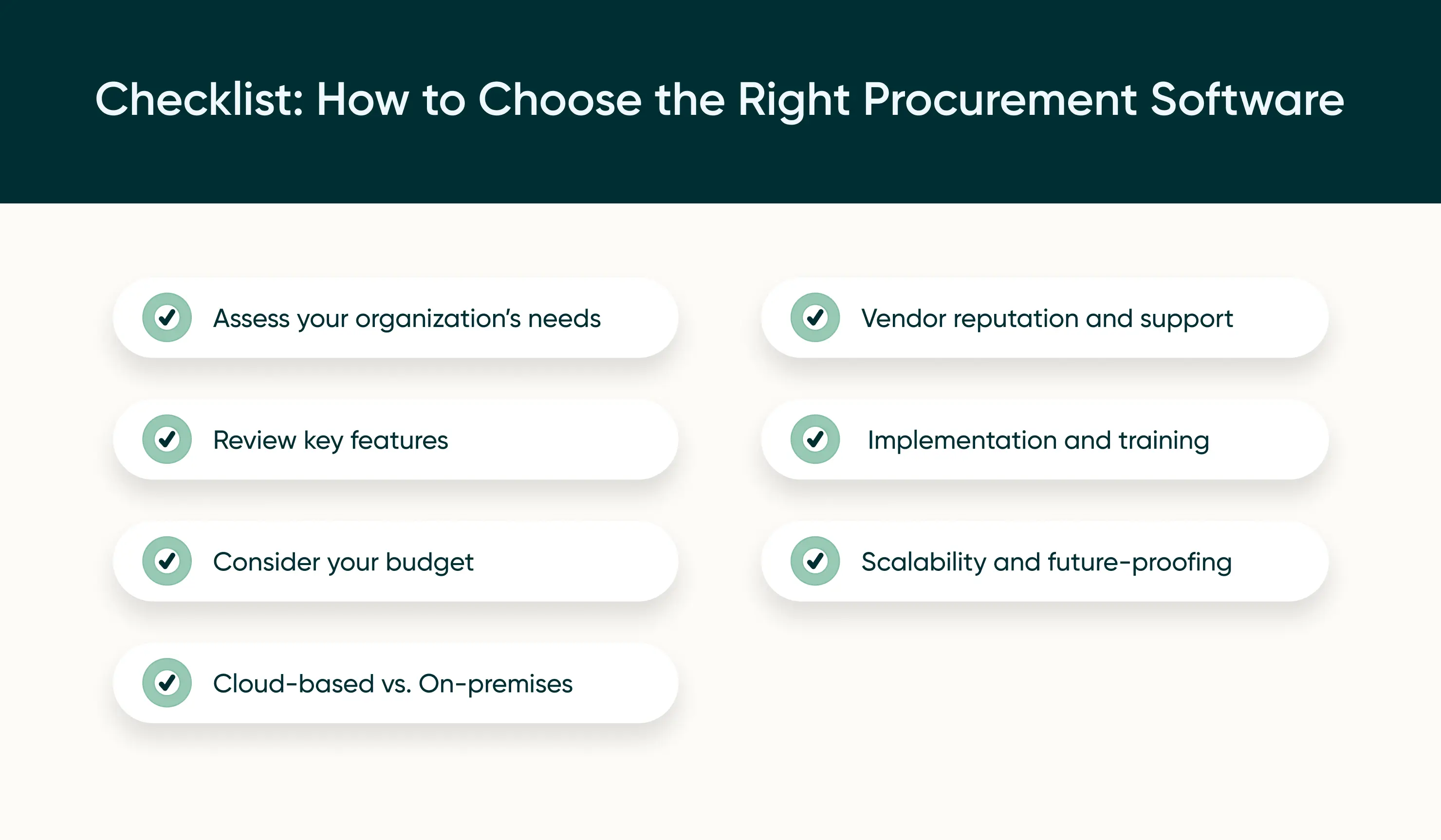
Once you’ve recognized the need to upgrade your procurement processes, the next step is to select the right procurement software for your organization. With a wide variety of options available, it’s essential to approach this decision with careful consideration to ensure that the software you choose meets your specific needs and helps you achieve your procurement goals. Here’s a guide to help you make an informed choice.
Assess your organization’s needs
The first step in choosing the right procurement software is to thoroughly assess your organization’s current procurement processes and identify areas that need improvement. Consider the specific challenges you’re facing—such as inefficiencies, lack of visibility, or difficulties in managing supplier relationships—and how procurement software can address these issues.
Key questions to ask include:
-
What are the most time-consuming tasks in our current procurement process?
-
Where do we experience the most errors or discrepancies?
-
How do we currently manage supplier information and contracts?
-
What level of visibility do we have into our procurement activities?
-
How do we ensure compliance with internal policies and external regulations?
By understanding your organization’s unique requirements, you can better evaluate which features and capabilities are essential in the procurement software you choose.
Key features to look for
While the specific features you need will depend on your organization’s goals and challenges, there are several core features that any good procurement software should offer:
-
Automation of routine tasks: Look for software that can automate tasks such as purchase order creation, invoice matching, and approval workflows. This will save time and reduce the risk of errors.
-
Supplier management: The software should provide robust tools for managing supplier information, contracts, performance metrics, and communication. This centralization makes it easier to maintain strong supplier relationships.
-
Spend analysis and reporting: Advanced analytics and reporting capabilities are essential for gaining insights into your organization’s spending patterns and identifying cost-saving opportunities.
-
Compliance management: Ensure that the software includes features for monitoring compliance with internal policies and external regulations, as well as maintaining audit trails.
-
Integration with existing systems: The ability to integrate with your existing ERP, finance, and inventory management systems is crucial for seamless data flow and process continuity.
-
User-friendliness: The software should be intuitive and easy to use, with a user interface that enables quick adoption by your procurement team.
Consider your budget
Procurement software can range in cost depending on its features, deployment method, and the size of your organization. It’s important to establish a budget early in the selection process and understand the total cost of ownership, including any implementation, training, and ongoing maintenance costs.
When evaluating the cost, consider the potential return on investment (ROI) that the software can deliver through increased efficiency, cost savings, and risk reduction. While it may be tempting to choose the least expensive option, it’s essential to ensure that the software meets your organization’s needs and will deliver the expected value over time.
Cloud-based vs. on-premises
Another important consideration is whether to choose cloud-based or on-premises procurement software. Each option has its advantages and disadvantages:
-
Cloud-based procurement software: This option is hosted on the vendor’s servers and accessed via the Internet. It offers flexibility, scalability, and ease of access, making it ideal for organizations that need to support remote or distributed teams. Cloud-based solutions typically involve lower upfront costs, but they may require ongoing subscription fees.
-
On-premises procurement software: Installed on your organization’s own servers, on-premises software provides greater control over data and security. It may be a better choice for organizations with strict data privacy requirements or those that want to customize the software extensively. However, on-premises solutions often involve higher upfront costs and require more significant IT resources for maintenance and updates.
Vendor reputation and support
The reputation of the software vendor is another crucial factor to consider. Look for vendors with a proven track record of delivering reliable, high-quality procurement software and providing excellent customer support. It’s also important to consider the vendor’s experience in your industry, as they will be better equipped to understand your specific needs and challenges.
When evaluating vendors, consider the following:
-
Customer reviews and testimonials: What do other users say about the software and the vendor’s customer service?
-
Training and support: Does the vendor offer comprehensive training resources and responsive customer support?
-
Product roadmap: Is the vendor committed to ongoing innovation and updates to keep the software competitive and aligned with industry trends?
Implementation and training
Implementing new procurement software is a significant undertaking, so it’s essential to plan for a smooth transition. Consider the time and resources required for implementation, as well as the support you’ll receive from the vendor during this process.
Ensure that the software vendor provides adequate training for your procurement team to get up to speed with the new system quickly. This includes not only initial training during the implementation phase but also ongoing support and resources to help your team fully leverage the software’s capabilities.
Scalability and future-proofing
For organizations still relying on traditional procurement methods, the signs that it’s time to upgrade are often clear:
-
Frequent errors
-
Slow approval processes
-
Lack of visibility
-
Difficulties in managing supplier relationships
Recognizing these challenges is the first step toward embracing a more efficient and effective procurement process.
When it comes to selecting the right procurement software, it’s essential to consider your organization’s specific needs, the key features required to address those needs, and the software’s ability to integrate with your existing systems. Budget, scalability, and vendor reputation are also critical factors that will influence your decision.
Consider how the procurement software will support your organization’s future growth. Choose a solution that is scalable and can accommodate an increasing volume of transactions, a growing supplier base, and evolving business needs. The software should also be adaptable to future technological advancements, such as artificial intelligence and machine learning, which are becoming increasingly important in the procurement landscape.
By taking the time to carefully evaluate your options and consider these key factors, you can choose procurement software that not only meets your organization’s current needs but also positions you for future success.
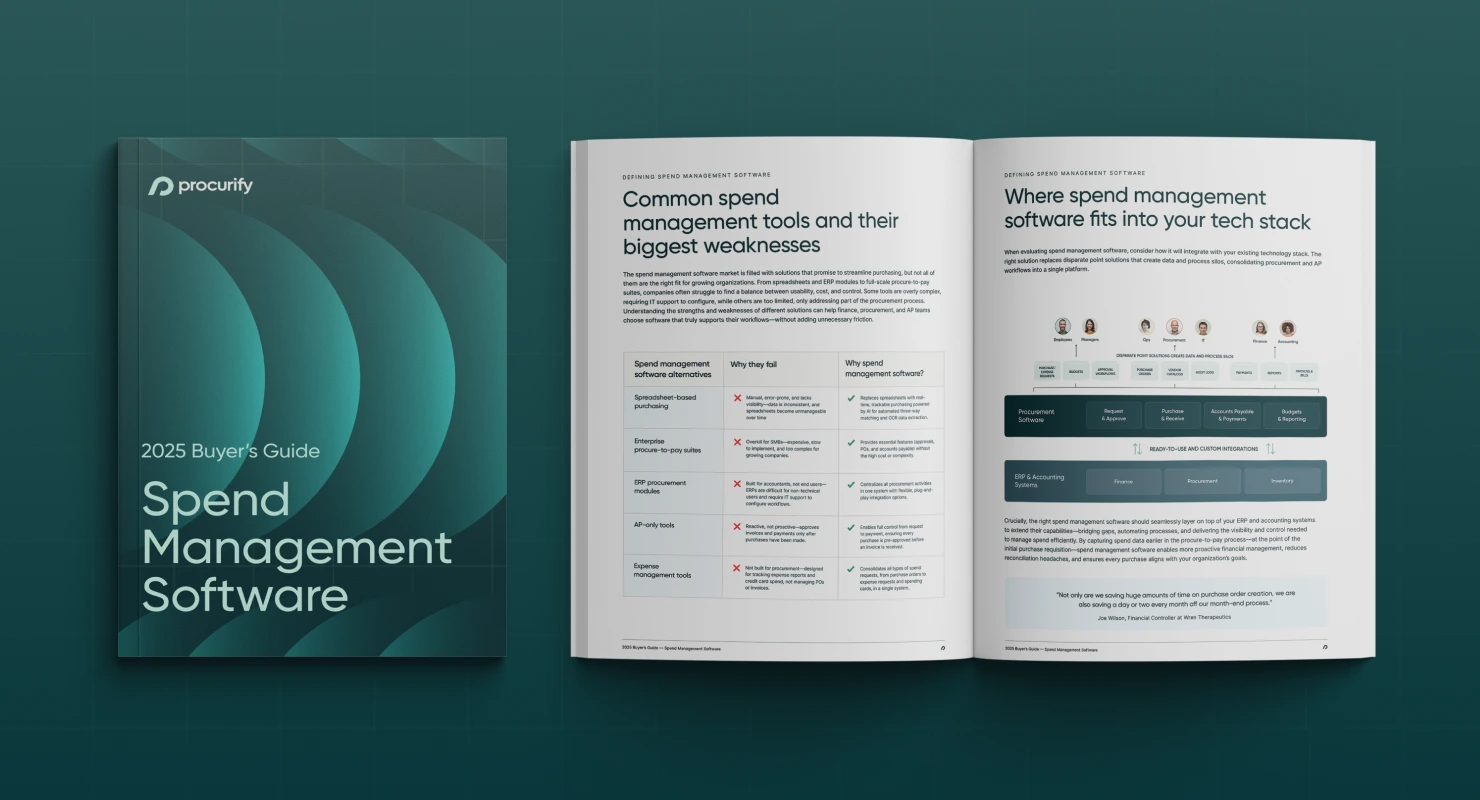
2025 Spend Management Software Buyer’s Guide
Choose the spend management solution best suited to your organization’s needs with an overview of the 2025 software ecosystem, feature comparisons, and a free vendor capability evaluation checklist.
